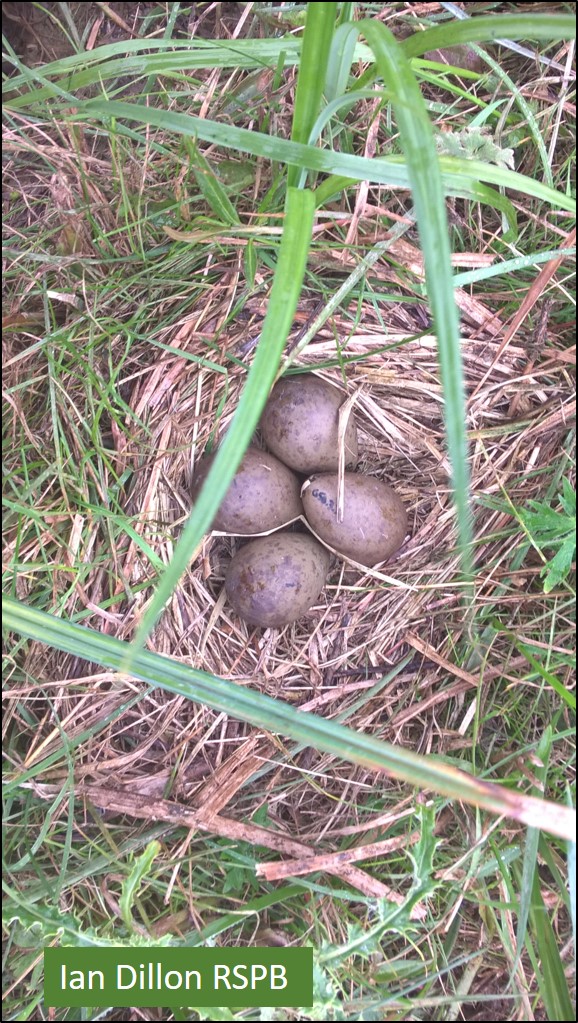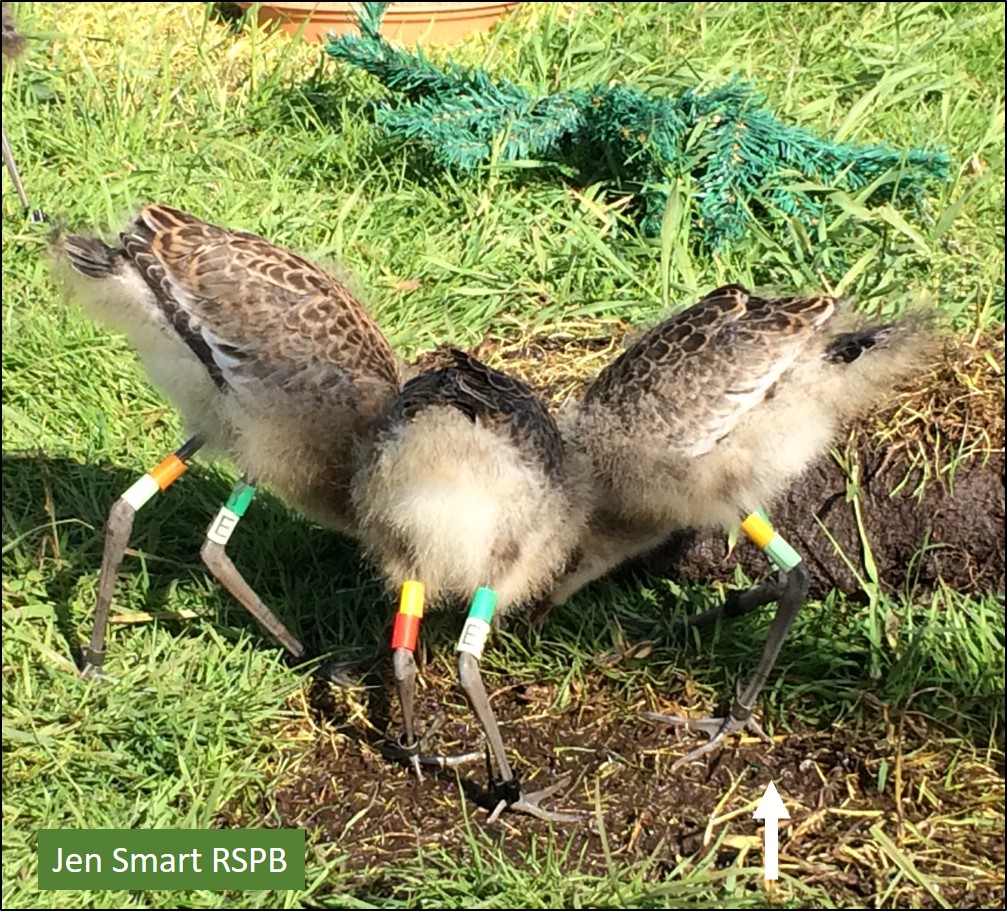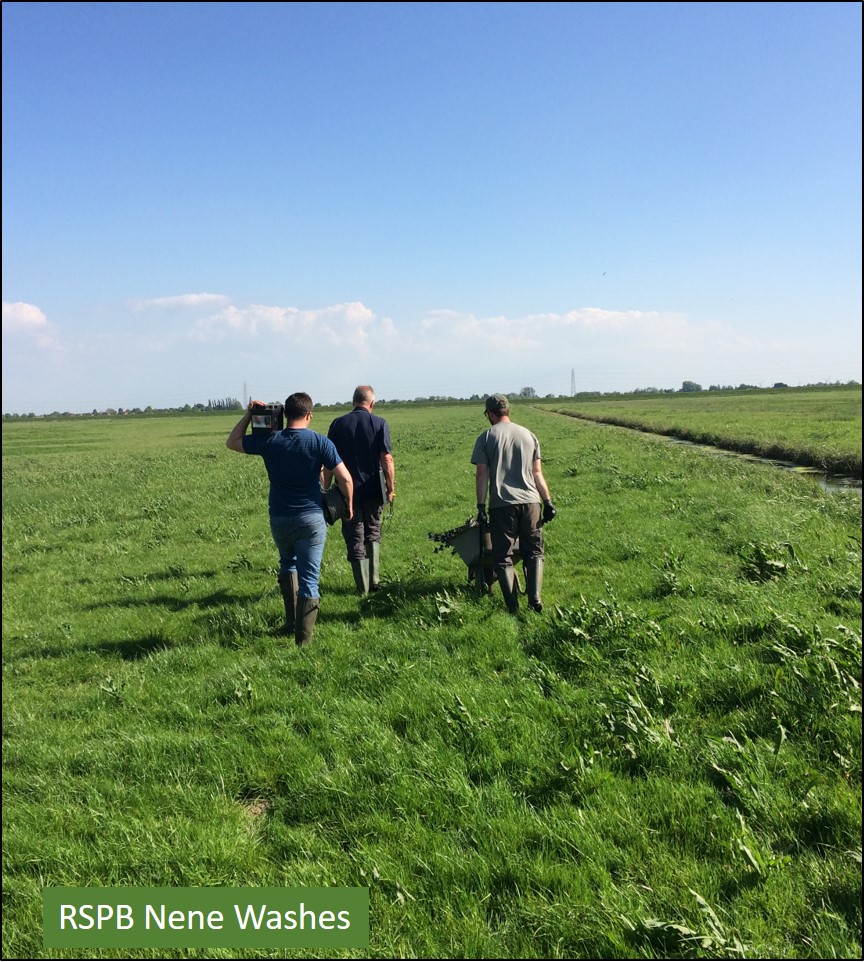Shorebirds are generally philopatric (site-faithful to breeding areas) – youngsters settle to breed in areas near where they were raised and adults don’t move far in subsequent years. What happens to this process when a species is expanding its range or if chicks are reared away from their parents?
Successful head-starting
In a recent trial, to see if head-starting might help to secure the future of limosa Black-tailed Godwits in the Washes of Eastern England, one of the questions to be answered was “would youngsters reared in captivity be able to gather all of the information they need to return to the same area to breed?”

Eggs collected from nests on the RSPB’s Nene Washes nature reserve were taken to the WWT’s facilities at Welney, about 35 kilometres away, to be head-started. Here, the eggs were hatched and the chicks were raised in captivity. As they got bigger, the birds were colour-ringed and moved into a large pre-release cage before being given their freedom, when old enough to fly. With 26 successful head-started chicks, this process added far more young Black-tailed Godwits to the local population than birds in the wild could manage, subject as they were to predation and to flooding of nests. You can read more on the Project Godwit website and in this WaderTales blog Special Black-tailed Godwits.
Limosa Black-tailed Godwits migrate south for the winter, most flying to countries such as Senegal in West Africa but with an increasing number short-stopping in Spain and Portugal. (There’s a blog about the wisdom of crossing the Sahara).

As birds moved north in the spring, Project Godwit staff were on the look-out for the previous year’s chicks. They were overjoyed when the first of these appeared at Welney, as had been hoped and might be expected, but puzzled when the second was sighted in Doel, near Antwerp in Belgium, showing signs of pairing with what was assumed to be a local, unringed male. So, what had happened to site-fidelity? Why had this colour-ringed female, named Remi, decided to settle over 300 km away? What are the implications for the project to boost the East Anglian population?

Philopatry in Black-tailed Godwits

The head-starting team had been fairly confident that site-fidelity would ensure that head-started birds would recruit locally, as long as the hand-rearing process did not mess with the innate processes that initiated recruitment.
A paper based on ringing recoveries of the limosa subspecies in The Netherlands, published in 1998 by Kruk et al, suggested that young Black-tailed Godwits tend to settle to breed close to where they previously fledged, with most moving no further than 6 km and no appreciable difference between the sexes.

In Iceland, where the islandica population of Black-tailed Godwits breeds, colour-ringing of chicks has also allowed dispersal patterns to be measured. Here, youngsters of the islandica race are still pretty site-faithful but there are appreciable differences between the two sexes, with some females dispersing far more than males. In their paper published in 2011, Tómas Gunnarsson et al found that males dispersed an average of 2.3 km (with a range of distances of 0.5 to 7 km) and females dispersed an average of 48 km (with a range of 1 to 204 km). As has been discussed in a previous WaderTales blog, Icelandic Black-tailed Godwit numbers have been increasing for a century, with birds moving into new breeding areas further away from the heartlands of the south coast. Dispersal is a necessary part of the expansion process. There’s more detail here:

The conservation problems being faced by limosa Black-tailed Godwits have spawned a lot of recent research in The Netherlands and along the subspecies’ annual migration route (see Dutch Black-tailed Godwit numbers down by nearly 75%, for instance). In a recent paper, Roos Kentie showed that three-quarters of the adults in her Friesland study site in The Netherlands breed within 500 m of their previous nest site, with a maximum movement of 15 km. Having successfully fledged and migrated south and then north, new recruits settled within 18 km. As in the previous paper about the limosa subspecies, there was no discernible difference between the distances moved by males and females, but there were differences in mean dispersal distances of youngsters raised in different habitats. Birds hatched on grass monocultures moved about twice as far as those from herb-rich meadows, but the mean distances were only 915 m and 1700 m for the two habitats. Young birds moved at a higher rate from the predominant monocultures to meadows than the other way around.
If limosa Black-tailed Godwits recruit to local sites then what was Remi, the head-started bird from the Washes of eastern England, doing in Belgium? Does this failure to be site-faithful impact upon the conservation programme that aims to boost local populations through hand-rearing and releasing chicks?
Back to the Belgian defector

By early May, five of the Project Godwit head-started Black-tailed Godwits (three males and two females) had been seen on the Ouse Washes, at Welney and other sites. This was excellent news and in line with what might be expected, given that the Dutch study has shown that only 30% of recruitment is in the first summer, with most birds not starting to breed until their second year. No birds had returned to the Nene Washes, where these eggs had been laid. In terms of site-fidelity, this is what had been expected. It was great news; head-starting works and can give a conservation boost for the species in areas where insufficient young are produced to maintain local populations. It may therefore be possible to reintroduce (or even introduce) Black-tailed Godwits to suitable sites, simply by releasing hand-reared fledglings when they are ready for their independence.

And then came number six. On 6 May, another of the ringed, head-started birds was seen on the Nene Washes, just a short distance from where the eggs had been collected. She was ‘home’ but did not know it, having been transported 35 km to Welney when in the egg. Amazingly, this bird turned out to be Remi, the female that had been consorting with a male in Belgium three weeks earlier. She was with an unringed male, a bird that members of the Project Godwit team felt looked ill-at-ease, not as accepting of their vehicles as were local birds. Perhaps Remi had acquired her mate in Belgium and brought him with her to England? If so, wouldn’t that be a result – this head-started Black-tailed Godwit had not only returned to breed but she might also have brought an extra bird with her!
In terms of site-fidelity, Remi fits with the patterns discussed above; she has not moved very far from the site she knew as a fledgling, as suggested by the studies of limosa birds, but she has dispersed further than any of the males, in line with the islandica study. It will be interesting to see what happens to subsequent groups of head-started birds.
** Fantastic update from Project Godwit **
“Delighted to share news that Remi, released last year at WWT Welney, now has chicks of her own at RSPB Nene Washes! Godwits don’t usually breed in their first year and we hope this is the first of many” 14 June 2018

For the latest news of the head-starting project, check out projectgodwit.org.uk or follow @projectgodwit on Twitter.
WaderTales blogs are written by Graham Appleton, to celebrate waders and wader research. Many of the articles are based on previously published papers, with the aim of making wader science available to a broader audience.

Reblogged this on Wolf's Birding and Bonsai Blog.
LikeLike
Pingback: Head-starting success | wadertales
Pingback: WaderTales blogs in 2018 | wadertales
Pingback: From local warming to range expansion | wadertales
Pingback: Black-tailed Godwits are on their way home | wadertales
Pingback: England’s Black-tailed Godwits | wadertales
Pingback: Keeping Track of Bird Migration | Bird Wise North Kent